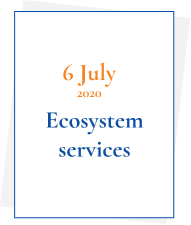
Science-based targets refer to goals set by businesses to reduce their greenhouse gas emissions in accordance with scientific climate models and data.
By committing to science-based targets, our company aims to reduce its carbon footprint by 50% within the next 5 years.
The Science Based Targets initiative (SBTi) was established in 2015 as a collaboration between CDP (a charity running a global disclosure system), the United Nations Global Compact (UNGC), World Resources Institute (WRI), and the World Wide Fund for Nature (WWF). Science-based targets are rooted in the latest scientific understanding of climate change. They ensure that emission reduction goals are ambitious and aligned with what is necessary to limit global warming to well below 2 degrees Celsius above pre-industrial levels. For a company to adopt SBTs requires understanding the organization’s current emissions profile, assessing its contribution to climate change, and then establishing targets that are consistent with climate science while also being feasible and impactful for the business. These targets typically cover emissions from a company’s operations as well as its value chain, including both direct emissions (Scope 1) and indirect emissions from purchased electricity, heat, and steam (Scope 2), as well as emissions associated with its supply chain and product life cycle (Scope 3).
Vědecky podložené cíle se týkají cílů, které podniky stanovují za účelem snížení emisí skleníkových plynů v souladu s vědeckými klimatickými modely a daty.
Zavázáním se k vědecky podloženým cílům chce naše společnost během příštích pěti let snížit svou uhlíkovou stopu o 50 %.
Iniciativa Science Based Targets (SBTi) vznikla v roce 2015 ve spolupráci CDP, UNGC (United Nations Global Compact), WRI (World Resources Institute) a WWF (Světový fond na ochranu přírody). Vědecky podložené cíle vycházejí z nejnovějších vědeckých poznatků o změně klimatu. Zajišťují, aby cíle snižování emisí byly ambiciózní a v souladu s tím, co je nezbytné k omezení globálního oteplování na úroveň výrazně nižší než 2 stupně Celsia nad úrovní před průmyslovou revolucí. Přijetí SBT vyžaduje pochopení současného emisního profilu podniku, posouzení jeho příspěvku ke změně klimatu a následné stanovení cílů, které jsou v souladu s vědeckými poznatky o klimatu a zároveň jsou pro podnik proveditelné a mají dopad. Tyto cíle obvykle zahrnují emise z provozu společnosti i z jejího hodnotového řetězce, včetně přímých emisí (rozsah 1) a nepřímých emisí z nakupované elektřiny, tepla a páry (rozsah 2), jakož i emisí spojených s dodavatelským řetězcem a životním cyklem výrobků (rozsah 3).
English Editorial Services’ mission is to assist international businesses and organizations of all sizes to communicate clearly, correctly, and persuasively with their business partners and target audiences.
Simply subscribe to receive our Business Term of the Day at no charge to your inbox each business day, with explanation in English and Czech.

English Editorial Services’ mission is to assist international businesses and organizations of all sizes to communicate clearly, correctly, and persuasively with their business partners and target audiences.
Simply subscribe to receive our Business Term of the Day at no charge to your inbox each business day, with explanation in English and Czech.

Receive a Business Term of the Day from English Editorial Services to your inbox each business day, with explanation in English and Czech.

Are you a European firm with interests in the U.S. or an American company with interests in Central Europe? We are in the Heart of Europe and the Heartland of America. We can assist with communications, transactional advisory, local representation, and new business operations.
